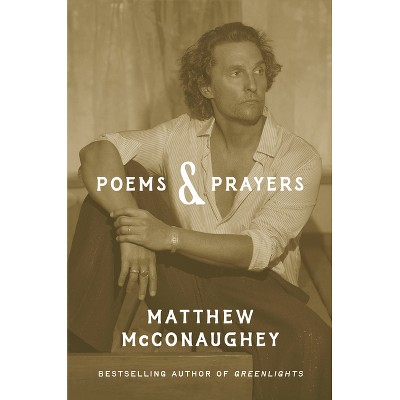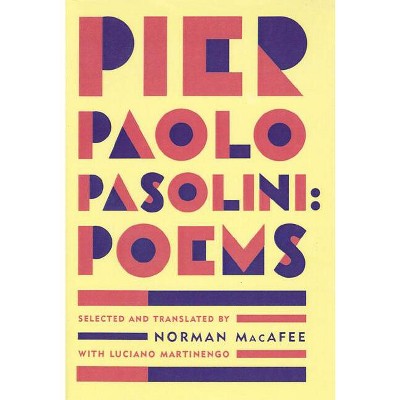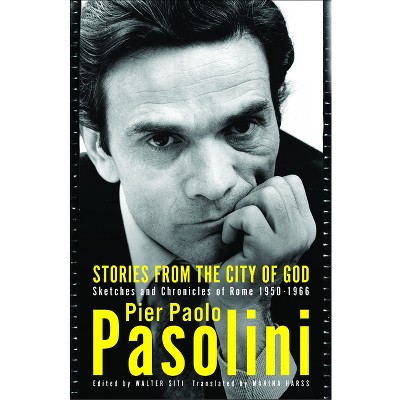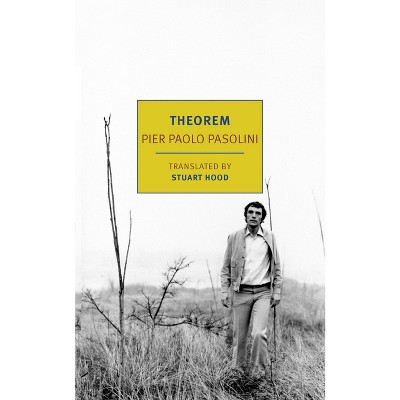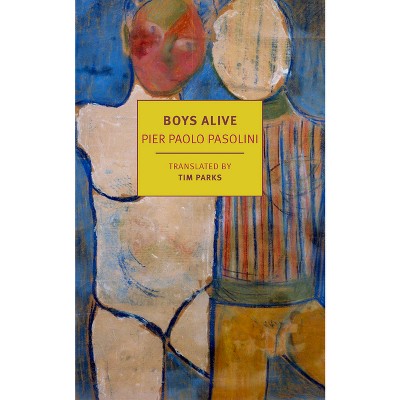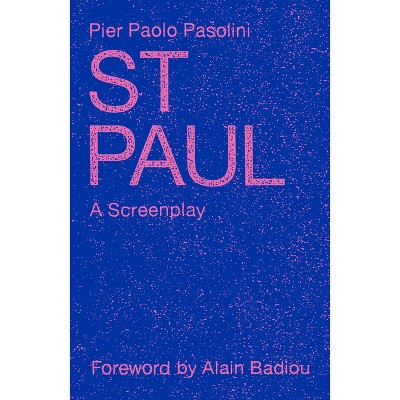Sponsored

Pier Paolo Pasolini for Art History and Practice - by Ara Merjian
Pre-order
Sponsored
About this item
Highlights
- Pier Paolo Pasolini (1922-1975) remains best known for his influential cinematic and literary works.
- About the Author: Ara H. Merjian is Professor of Italian Studies at New York University.
- 464 Pages
- Art, History
Description
About the Book
Pier Paolo Pasolini's influential cinematic and literary works attest to a crucial early formation: his intermittent practice as a painter, critic, and historian of art. Spanning the fifth-century BCE to the early twenty-first century, this volume's wide-ranging chapters reflect the breadth of Pasolini's aesthetic concerns, from Greek vase painting to the painting of Andy Warhol.Book Synopsis
Pier Paolo Pasolini (1922-1975) remains best known for his influential cinematic and literary works. These attest in turn to a crucial early formation: Pasolini's intermittent practice as a painter, critic, and historian of art. Spanning the fifth-century BCE to the early twenty-first century, this volume's chapters reflect the breadth of Pasolini's aesthetic commitments and predilections, from Greek Attic vase painting to the to the spread of Caravaggism; from folkloric ethnography to the painting of Pablo Picasso and Andy Warhol. Alongside essays examining his influence on twentieth- and twenty-first century aesthetics, artists of different nationality, gender, and generation address Pasolini's continued consequence for their own work. The very notion of a politically engaged artistic practice owes a debt to Pasolini's oeuvre - one he called "extravagantly interdisciplinary," and which finds incisive reflection in the media, methods, and subjects addressed in these pages.From the Back Cover
'Gathers together a raucous, sharp, and kaleidoscopic cast of art historians, literary scholars, practicing artists, and filmmakers to assess not only how Pasolini's oeuvre was nuanced by his study of art and its multiple histories but, more urgently, how art history can be revitalized through its critical engagement with Pasolini. Essential reading for anyone invested in the political and philosophical potentiality of the image.'
--Prof. Maria Loh of the Institute for Advanced Study at Princeton
--George Baker, Walter Hopps Chair in Modern and Contemporary Art, Professor and Chair, Department of Art History, UCLA Pier Paolo Pasolini (1922-1975) remains best known for his influential cinematic and literary works. These works, in turn, reveal the formative influence of Pasolini's intermittent practice as a painter, critic, and historian of art. His university studies under Roberto Longhi - a key contributor to art history as an academic discipline - decisively shaped Pasolini's cinematic and poetic corpus. Pasolini's self-declared 'figurative epiphany' continues to dynamise aesthetics, politics, and their urgent intersection. Spanning the fifth-century BCE to the early twenty-first century, this volume's chapters reflect the breadth and depth of Pasolini's aesthetic and theoretical predilections: from Greek Attic vase painting to the Lombard cinquecento and the spread of Caravaggism; from stylistic questions of the Spanish and Italian Baroque to neoclassical sculpture; from post-war Communist cultural policy and folkloric ethnography to the painting of Pablo Picasso, Giorgio Morandi, Andy Warhol. Alongside essays examining Pasolini's influence on twentieth- and twenty-first century aesthetics, artists of different nationality, gender, and generation address Pasolini's consequence for their own work today. The very notion of a politically engaged artistic practice owes a debt to Pasolini's interdisciplinary body of work, which finds reflection in the wide-ranging media, methods, and subjects addressed in these pages.
About the Author
Ara H. Merjian is Professor of Italian Studies at New York University.


